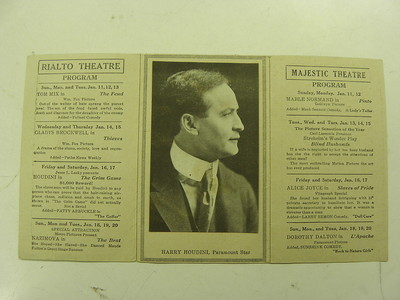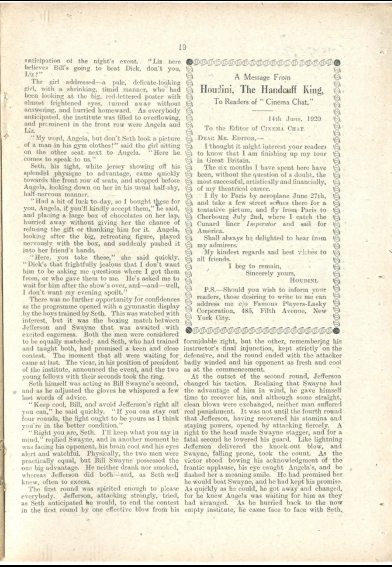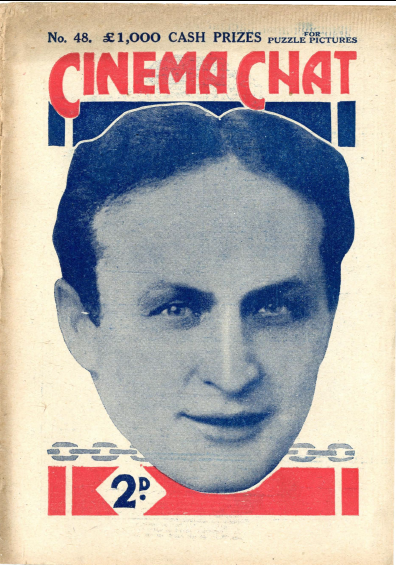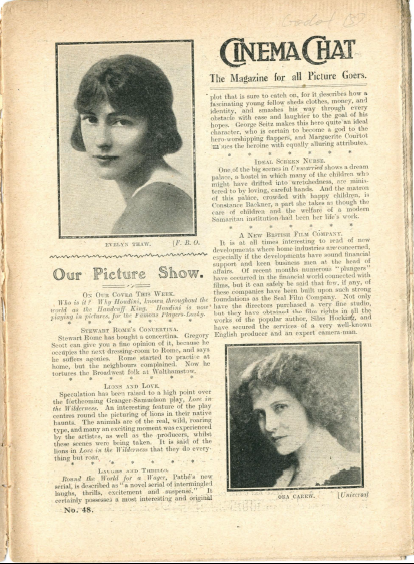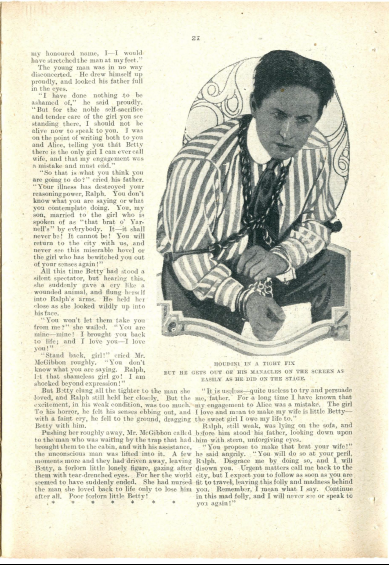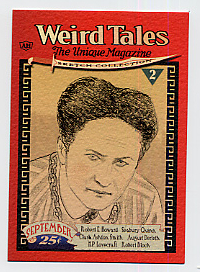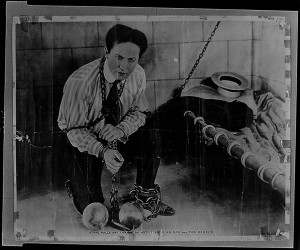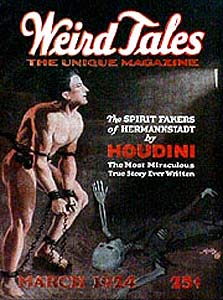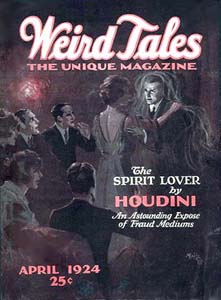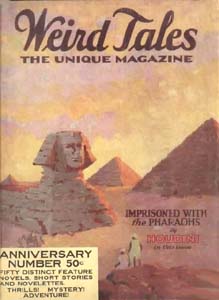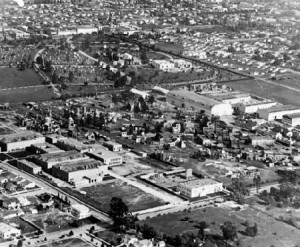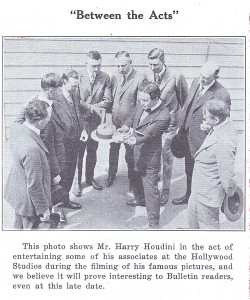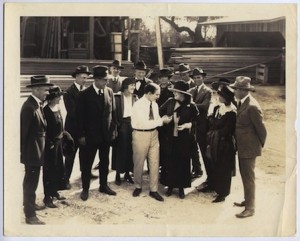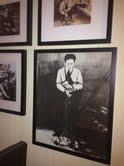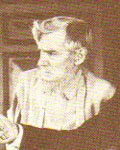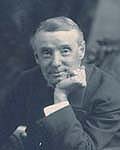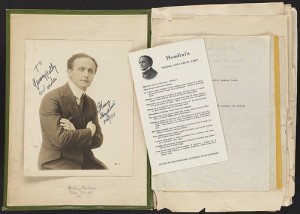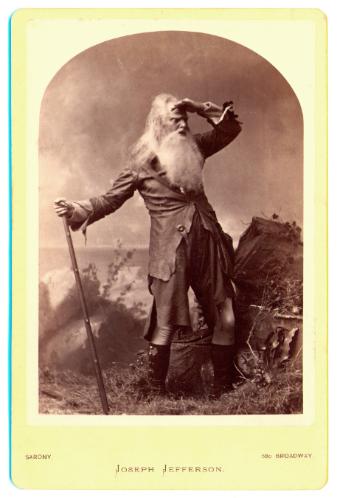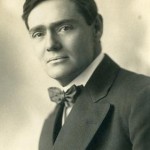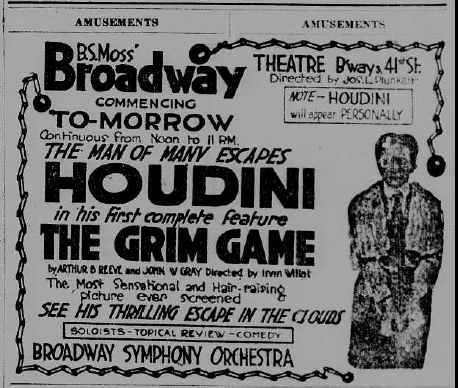
NY Tribune August 24th, 1919
93 years ago to the day, August 25th, 1919, The Grim Game opened at B.S. Moss’s Broadway Theatre at the corner of B’way & 41st St.
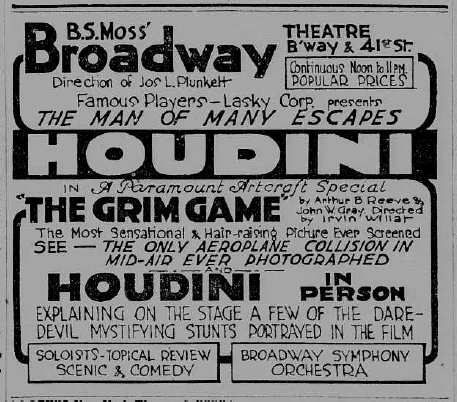 NY Tribune August 27th, 1919
NY Tribune August 27th, 1919
Houdini appeared in person explaining on the stage a few of the dare-devil mystifying stunts portrayed in the film.
Below is a review of the film, story and Houdini’s speech from the NY Tribune. Enjoy!
Houdini Shows How Easy It Is to Do Hard Things and Make a Good Photo Play
“The Grim Game”, at the Broadway Theatre is entirely different from any picture we have seen, and it seems to us a smashing success in every sense of the word.
Our only criticism is that the story is too long in getting started. We wanted less preparation and more Houdini, and after the picture was finished we felt still more strongly that a lot of time had been wasted in the first two reels. The last three are crammed full of miraculous escapes, aeroplane flights and disappearing heroes.
All of the things which Houdini does (they are not tricks) are done in plain sight of the camera, so that if you cannot do them too it is not because you do not know how they are done.
The story is by Arthur B. Reeve and John W. Gray. It tells of a miser, Thomas Jefferson, who lives alone a beautiful old home with his niece. Her fiancé is Harry Hanford, a reporter. This is Houdini. The owner of the newspaper is in debt to old Cameron, who holds his notes. A Richard Raver, lawyer, is also in debt and has forged his clients name to secure money.This part is cleverly played by Tully Marshall. Dr. Tyson who completes the triumvirate, would benefit by old Cameron’s death, because his will states that the doctor must marry his niece and inherit his money.
Hanford arranges a bet concerning circumstantial evidence, which if his employer wins, will bring him money enough to redeem the notes held by Cameron.
The old miser is to be spirited away and he himself is to be the suspect. Only the plan goes astray, for some one really does murder the old man, and the three men who have been in the game with Hanford all claim that they know nothing about it, and refuse to clear him.
As all three of them would benefit by Cameron’s death the story resolves itself into one of those mystery murder plays.
Houdini makes a speech at the end of the picture in which he tells of the aeroplane collision which is shown so plainly in the pictures. The ending was to have been quite different, but when the propellers on two planes interlock, and the planes are sent whirling around in the air 4,000 feet above the earth and the camera catches it we do not wonder that they to keep it in the picture.
The plane in which Houdini is chasing his enemy is directly over the other plane. He lets himself down by a rope, and it was the intention of the scenario writer to have climb in the enemy plane and take the wheel, but the other way was much more exciting only, of course no one would voluntarily take such a risk.
Houdini’s speech is dignified and effective. He makes no attempt to be facetious, but merely tells of the danger of making such a picture. Irvin Willat directed the picture and risked his life to photograph some of the scenes.
H. U.

